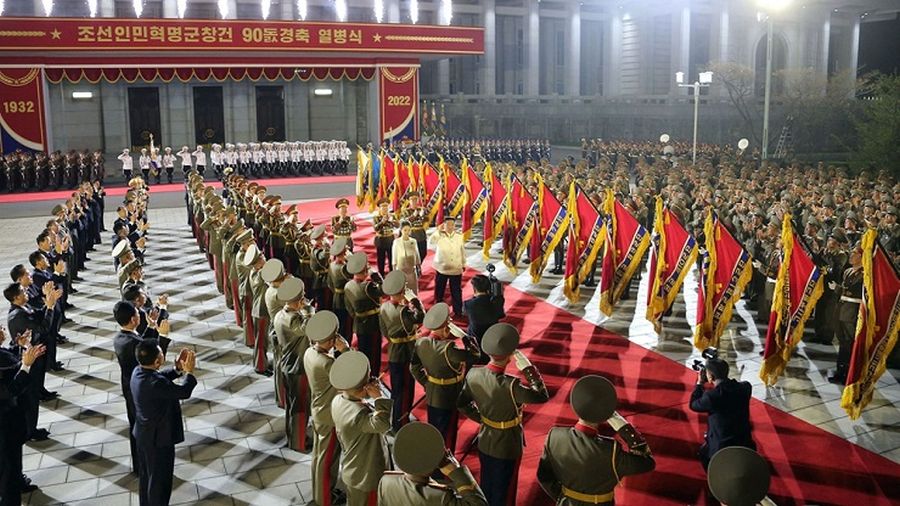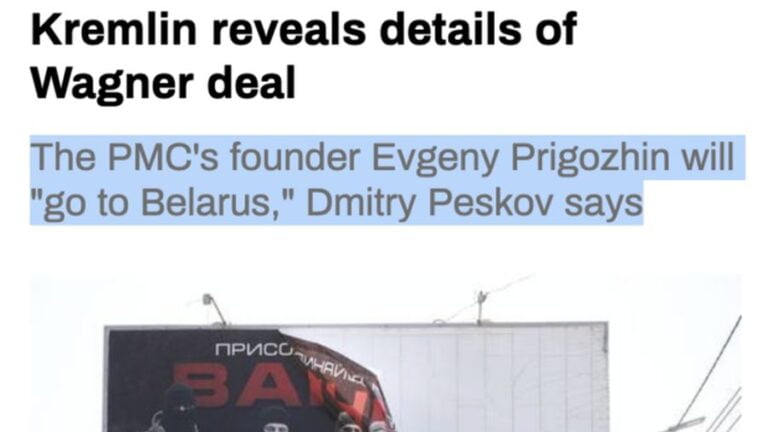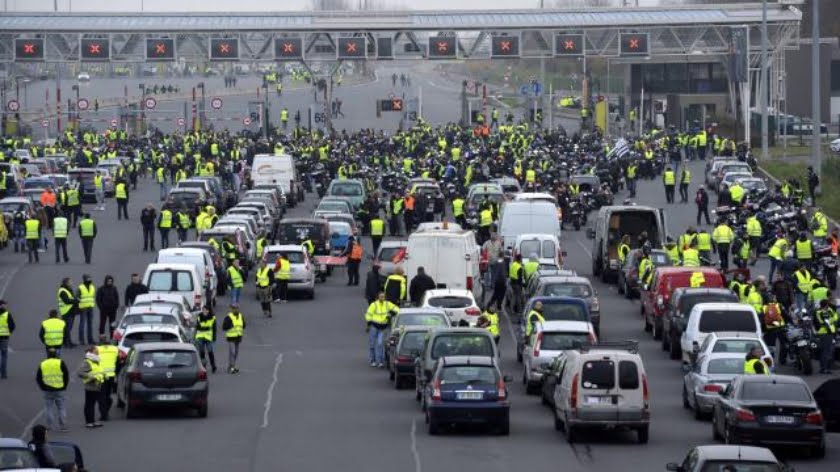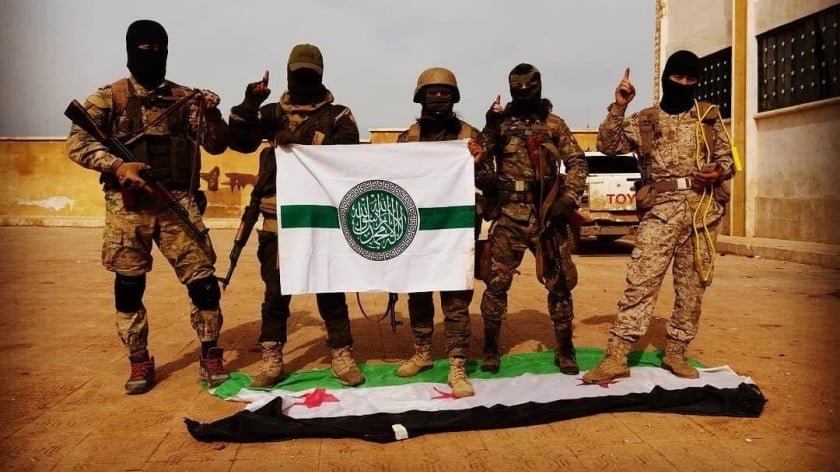Military Parade in Pyongyang on April 25, 2022
Although Kim Il-sung’s 110th birthday on April 15, 2022 was spared from military demonstrations, the expected parade (the twelfth during Kim Jong-un’s presidency) was held ten days later.
On April 25, the country celebrated the 90th anniversary of the founding of the Korean People’s Revolutionary Army, the predecessor of today’s KPA. While the existence of this guerrilla unit in the official DPRK version is a matter of debate, Kim Il-sung was certainly a renowned guerrilla commander, and in this aspect the parade well highlighted the continuity of the armed forces and allowed a sort of “separation” between the Kim anniversary as a celebration focusing on peaceful achievements and the KPRA anniversary as a “celebration for military experts” who had their fun.
The parade on April 25, 2022 was the first to be held formally in honor of the KPRA – previous military parades had been held on the birth anniversary of Kim Il-sung on April 15, the anniversary of the founding of the Workers’ Party on October 10, or the founding of the DPRK on September 9. Like previous parades, it started late in the evening, and South Korean intelligence believes the latest parade may be the biggest event in the DPRK to date. This was true of both the total number of participants and the military equipment presented.
In terms of units and formations, everyone was at the parade.
To briefly list the equipment, the following have been driven through the streets:
- The 240-mm and 300-mm MLRSs. 240mm ones on a new chassis.
- Self-propelled and man-portable launchers of different types of anti-tank missile systems – notional analogues of Spike NLOS or LR, AT-4, or NLAW systems.
- “Kimskanders” KN-23, and KN-24 weapons similar to the American ATACMS class missiles. As well as the notorious quite small-sized “system for long-range artillery” that was tested in April.
- The new SLBM. Compared to the Bukkykson-5, its hull length has been increased by 1-1.5 meters to approximately 12 meters, and it has a larger nose, which may indicate the possibility of equipping it with a multiple warhead.
- The hypersonic Hwasong-8 missile. The warhead is a wedge-shaped hypersonic gliding vehicle (HGV).
- The Hwasong-17 ICBM, presumably with multiple independently targetable reentry vehicles (MIRVs).
The celebration was definitely a success, but the attention of the audience and experts was more on what the DPRK leader said at the commemorative speech, for it was probably about changing the strategy for the use of nuclear weapons.
Kim Jong-un noted that in today’s world, “characterized by a sharp and fierce clash between forces”, “we will have to confront the imperialists for a long time, getting more evil with the days”, and the peace, dignity and sovereignty of the state are guaranteed only by “mighty self-defense power to gain absolute upper hand over any adversary.” And since the arms race is not over, “we must continually strengthen ourselves. There can be no contentment and no end in forging the strength to defend ourselves.” Therefore, the army, first, must be “strong in ideas and convictions.” Second, it should be “a select mighty armed collective, full of self-confidence and courage, quite capable of responding immediately to any war or crisis.” Third, “the trend in the development of world military forces and the rapidly changing form of warfare now requires our army to modernize itself even more rapidly in terms of military technology.”
Kim Jong-un has pointed out that “the North’s nuclear weapons have as their primary purpose the deterrence of war”, but in the event of an undesirable situation they cannot be constrained by the sole mission of preventing war.
In the Western and ROK media, Kim Jong-un’s statement was quickly reinterpreted as a new round of nuclear threats.
It was noted that the North had previously talked about using its nuclear weapons in self-defense in the form of deterring aggression, retaliating or repelling enemy attacks. However, in April 2022, Kim Yo-jong described a scenario of using nuclear weapons to “show initiative at the outset of war” and prevent protracted hostilities. This was seen as an opportunity for Pyongyang to launch preemptive nuclear strikes even in a conventional war. Indeed, there are already concerns in the ROK that the DPRK is in the final stages of developing tactical nuclear weapons and may already have several compact nuclear warheads of up to several kilotons, which it intends to test in the future. As retired South Korean Army General In-Bum Chun noted, the North does not need to demonstrate that it has a nuclear warhead, but it can demonstrate that it has a small enough warhead to mount it on a short-range missile.
And on April 20, Lee Sang-min, a researcher at the Korea Institute for Defense Analysis, said that North Korea could use tactical nuclear weapons in the face of superior military capabilities of South Korea and the United States. The researcher noted that Pyongyang is working on developing both tactical and strategic nuclear weapons. According to Lee, the North will continue to diversify its tactical nuclear weapons for various purposes, including nuclear electromagnetic pulse (EMP) or neutron bombs.
As someone with a military background, Kim Jong-un closely follows both the evolution of military weaponry and trends in the areas described above. Therefore, Kim is adjusting doctrine on the use of nuclear weapons to meet the demands of the times.







